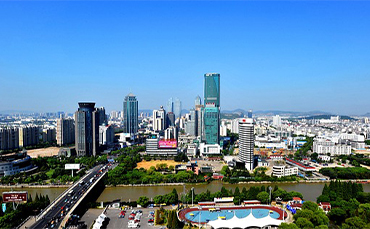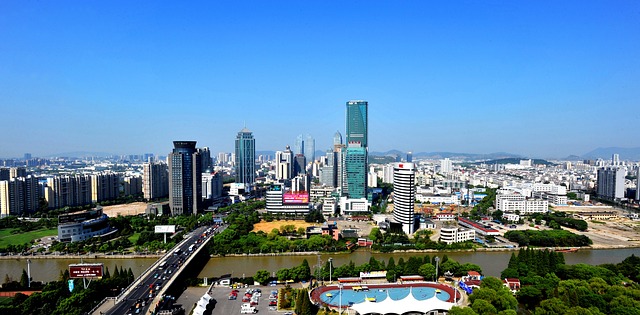



Introduction
The relationship between spatial production and new quality productive forces must be one of mutual promotion, mutual adaptation, and mutual impetus. We need to identify and follow the laws of the relationship between space and the development of new quality productive forces. And spatial governance also needs to adapt to the new demands of new quality productive forces and spatial scenarios.
Author: Yuan Xin, Executive Director of UPSC and President of Tsinghua Tongheng Planning and Design Institute
The 2024 Government Work Report proposes vigorously promoting the construction of a modern industrial system, accelerating the development of new quality productive forces, and has made a series of deployments in this regard.
When discussing new quality productive forces, the issue of productivity and production relations cannot be avoided. At present, the elements of productivity have undergone some fundamental changes with the progress of science and technology, resulting in some "new characteristics and new content." These new elements and the new combinations of various elements will greatly enhance production efficiency. At the same time, our production relations also need to actively adapt to the development of these new quality productive forces. For spatial planning and management, it is necessary to actively adjust and create adaptable spatial carriers and spatial governance models for the development of new quality productive forces.
How should the development of productivity and production relations be implemented in urban spaces? In the current context of vigorously cultivating and developing new quality productive forces, how should we respond in urban and rural planning?
Reconfigurations of various spatial elements
Space is a container where socioeconomic activities, influenced by the interaction between productivity and production relations, take place. With the advancement of urbanization in our country, more and more people are moving into cities. The arrival of an aging society has significantly changed their needs on space.
In the past, we considered people's demands as one thing. In this new development stage, we need to pay attention to the needs of each type of person, each group, each individual and each enterprise. The significance of spatial planning lies in coordinating resource protection and spatial utilization to meet the spatial needs of productivity development as much as possible.
Before the Industrial Revolution, British household workshops were almost all following the type of "shops in the front and factories in the back." The changes in labor tools brought about by the Industrial Revolution improved production efficiency and altered the relationship between work and residence and the appearance of cities. Large-scale machine production also led to environmental and social issues. In this context, the UK enacted the Public Health Act, promoting modern urban functional zoning, dividing urban functions such as industry, residence, and recreation, and providing a better living environment for people.
Today, with the emergence of new technologies, new products, new scenarios, and new services, the industrial and spatial structures in cities are changing before awareness. The strictly zoned spaces can no longer meet the progress of social development. At this time, spatial production (a professional term emphasizing the development and utilization of spatial resources by humans, as well as the role and impact of space in social, economic, and cultural aspects) is related to changes in the demand for production factors and the adjustment of production relations driven by new quality productive forces. This requires us to provide new spatial supply.
The ultimate purpose of planning and management is to empower social progress and development. From a spatial perspective, new spatial elements may not emerge; instead, in response to the needs of developing new quality productive forces, spatial planning is more about innovating the combination modes of spatial elements, improving spatial efficiency, gathering innovative populations, stimulating innovation vitality, cultivating innovative industries, and providing applications of innovations. Planning and management must also keep pace with the times and update promptly, such as adapting design standards and norms to new technologies, adjusting urban and rural construction-related policies and mechanisms, and promoting the development of the social economy through new economic models.
For example, in the past, to curb the damages to nature by human activities, we could only designate protected areas and prohibit various construction activities in these areas. Now, we can use new technologies to minimize the impact of human activities on the environment, allowing for certain human activities under the premise of ensuring the sustainability of nature and ecology. This creates more pleasant combinations of spatial elements, create new application scenarios, and promotes economic development.
In some rural areas, advances in agricultural production methods have distanced the previously close spatial connection between rural homesteads and farmland. Farmers now have more diverse income sources, and the emergence of new economic scenarios such as agricultural tourism and farm stays has increased the connections between villages and natural landscapes. The widespread adoption of distributed energy and sewage treatment facilities also provides new technical support for rural development. In the future, as the urbanization process deepens, the location and morphology of villages will further adjust.
Therefore, the relationship between spatial production and new quality productive forces must be one of mutual promotion, mutual adaptation, and mutual driving. The spatial requirements for new quality productive forces are not a completely new spatial form, but rather new combinations of various spatial elements that support new development concepts and various new economic scenarios. New scenes and new services are generated through spatial production, optimizing the layout of various elements of productivity, and coordinating the development of productivity and production relations. This stimulates urban and rural economic vitality, realizes the aspirations of the people for a better life, and promotes high-quality social development.
Reconstruction of the underlying logic,not just the space itself
Facing the above objectives, as for spatial planning, we must seek and adhere to the objective laws between space and the development of new quality productive forces. We should not merely discuss space in terms of space itself but consider the significance of space for economic and social development. It is crucial to reconstruct the underlying logic of planning oriented towards the development of new quality productive forces. Supported by new technologies, we should shift from a land-based two-dimensional mindset to a systemic and interconnected three-dimensional spatial planning mindset. We need to integrate spatial production and spatial utilization, fully unleashing new modes of three-dimensional spatial element combinations.
Specifically, after completing a planning blueprint, we should not only calculate the quantity of construction and estimate the investment scale, but also have the capability to assess how much employment and tax revenue can be generated in the future in that area, how much carbon emissions can be reduced, and whether the health conditions of residents can be improved. This is the goal of urbanization centered around people. If we cannot support new economic scenarios or inspire new economic vitality, the value of spatial planning and construction will be greatly diminished.
Furthermore, our spatial governance needs to adapt to the new demands of new quality productive forces and new spatial scenarios, which is also part of the effort to align production relations. The policy logic of spatial governance should serve the goal of advancing economic and social development more effectively through spatial production. In this process, integrating updates of industry standards, guidelines, and norms, we should combine spatial governance with new quality productive forces and production relations. This involves constructing the spatiotemporal relationships between space and the development of new manufacturing, new formats, and new services, enhancing the level of refined management, and promoting the formation of new quality production relations.
We hope that spatial governance can evolve from focusing on "acres" to "cubic meters," where the target of urban spatial planning is not merely land use but encompasses three-dimensional space, its application scenarios, and behaviors. This approach serves as the spatial base for adapting production relations to enhance the overall value presented by space.
Source: <https://mp.weixin.qq.com/s/7s9CxD9n281ljS04ID9A6A>
Translated by He Huiling